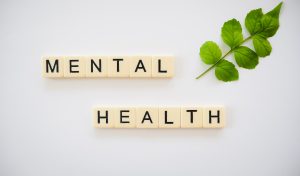Have you ever been torn whether or not you should go out with friends or finish an assignment? Or how about going back and forth on whether or not you have time to squeeze in an hour of exercise after school? Have you ever debated if you have time to cram in a power nap after work before starting your homework? Many of you reading this have probably faced some similar type of dilemma before: sacrifice your mental health or finish an assignment for school. Adults often tell children that school comes first, but this reinforces students to neglect key components of their lives, such as socializing and self-care. It advocates that school is more important than taking care of one’s mental health.

Mental Health Comes First
Children should be taught at a very early age that they should prioritize their mental health, even more so than their academics. Why should this be the case? It’s because our encompasses our overall well-being, which includes emotional, psychological and social well-being. These three factors contribute to how we feel, function, and interact with one another. If we do not take care of our mental health, then all areas of our lives, including academics, become much more difficult to manage. In other words, we need to make sure that we are successful at preserving our mental health if we want to ensure that we are able to be the most successful in other areas of our lives.
Mental Health and Learning Go Hand in Hand
We might not always view our mental health as a direct contributor to our achievement in school, but it is. Both mental health and learning are linked to how we process information. If someone prioritizes their mental health then this will lead to them feeling better and thinking more clearly and/or rationally. This will initiate a more productive outcome in school because when we feel better, we have a tendency to be more motivated, get less discouraged by small setbacks, and understand things better because our brains are healthier.
Ways to Promote Mental Health in the Classroom
- 1. Take Breaks
It is vital that teachers do their best to protect students from experiencing burn-out. Burn-out is essentially when a student is overwhelmed by an unprecedented number of negative emotions because of a deprivation of relaxation and not taking part in activities that they enjoy. To avoid students from experiencing burn-out, teachers should assign a reasonable amount of homework and incorporate breaks into class time.
- 2. Provide More Chances to Interact

Another way mental health can be prioritized in a school setting is by allowing students the opportunity to talk to their fellow classmates. Instead of speaking in front of the entire class, small group discussions with peers can lead to everyone feeling heard and valued in a less intimidating environment.
- 3. Address It

It should be normalized and required that at the end of every syllabus/course outline, teachers include mental health resources. This may consist of the school counseling center information, highly regarded mindfulness apps, helplines, etc. In this section of the course outline, the teacher should also explain how they understand that mental health comes first and that they are there as a resource for their students to seek help.
Teachers’ responsibilities are to help and encourage students to learn. However, they should not be limited to only educating their students on the material outlined in their course syllabus, but pushed to enlighten students on how to promote their mental health. To put it simply, if our mental health is thriving then so will our academic performance.
Written by: Olivia Fitzgerald
